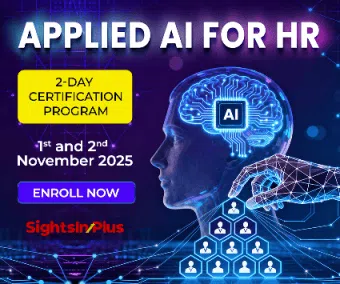Incentive & Variable Pay Trends in 2021 and Beyond
Remuneration continues to remain one of the prime drivers of human behavior in contractual relationships. To orient strive of people and to shape outcomes, changes in remuneration structure & formats have been a continuous effort for long. Though form & extent of mix varies among different sectors and types of organizations, largely it is linked to meeting & exceeding of key objectives of enterprise. Direction of change during last decade has remained same; to progressively increase proportion of variable pay linked to outcomes.
Performance; Key Criterion
While new formats of employment have brought flexibility and value creation of higher-order, obsession with outcome orientation remains key to design pay mix in critical functions. Workplace disruptions of 2020 have accelerated adoption of remote working in a large proportion of workforce for most organizations. This has brought its own set of challenges in driving workforce productivity & value creation by teams. Changed formats of work design are likely to cause significant impact on compensation structure, quantum, and its administration. Exclusive engagement is gradually moving towards shared resources model among organizations of all types & genres. Similarly, FTE format is reducing in proportion to give way for need-based part-time formats of employment. Acceleration of these trends present opportunities to implement more apt rem designs which serve purposes of employee & organization alike.
Shifting Priorities
New hiring in 2021 & beyond will see more creative application of incentive structures and rewards mechanisms that are fit for purpose. This change is likely to be different among various types of job families. Functions, where outcomes are objective and measurable, will continue to put more emphasis on variable pay linked to results across hierarchy. Applications of loaded variable pay have already started at entry levels jobs as well across multiple sectors. In mid and leadership level roles proportion is likely to be in the range of 20% – 40% of overall Compensation. One of the key shifts of previous years likely to continue in next few cycles is higher granularity and linkages to individual performance as opposed to overall results of organization. Scope of rewards, linked to overall Organization Performance, is likely to shrink further limited to key leadership level roles, decoupling mid and entry-level positions.
Build Novelty
Growing complexities and competitive pressures have already brought a very sharp focus on selection & rewards mechanisms in every sector of employment. Overall growth environment & macroeconomic variables require more careful management of total employment cost in organizations. It also presents an opportunity to design creative & customized rewards structures for different resource types attuned to achievement of organizations’ business objectives. While organizations are likely to continue pressing the peddle further to enhance share of variable pay in overall pay mix, ultimately demand-supply equation will determine the extent.
As a trend line, Value Creation roles due to limited availability will continue to attract premium with comparatively lesser variable and more assured pay. Value multiplier roles due to ease of supply and increased availability are projected to have larger share of variables linked to delivery & outcomes. Usage of variable pay is likely to play differently among different skills & competencies boxes. Hot skills in technology, data, analytics, R&D, digital marketing, etc will continue to remain tilted in favor of assured pay to ensure stability & continuity.
Beyond Conventional
Pay for performance has remained all-pervasive across sectors in Services, Technology, and new age organizations. It has progressively been applied to more conventional industrial, infrastructure & manufacturing sectors. This decade is to progress on more granular & objective assessment of individual & team contributions and establish clear linkages between variable rewards & results. Providing more opportunities for wealth creation to select talent is a growing trend. Startup organizations are able to attract higher share of talent by way of creating such opportunities.
Large scale organizations to attract & retain their share of high-end talent have also been introducing Long Term Incentive plans beyond ESOPs and RSUs. To drive stability & retention of select members, this is likely to gain momentum in current year for leadership levels. This also helps optimization of cash flows for companies as wealth creation of employees takes place through market valuation and other applicable factors. Similarly, in long gestation BOT projects, back-loaded and telescopic models of variables linked to success will continue with higher quantum. These schemes work quite effectively as barriers for considering a change of job since overall proposition in long term becomes quite compelling for individual.
Talent which will create differentiated value for enterprise and for stakeholders will continue to be valued. Linkage of rewards with value creation will continue to be sharper in subsequent cycles. Scope of application of incentives and variable pay will enlarge to address uncertainties, albeit with new and creative forms & designs. Demand – supply equation of talent in functions & skills baskets will be most important factor for organizations to decide on pay mix for new hires during the year. Emerging formats of employment are an opportunity to drive cost-focused and need-based resource models and methods. Overall a few cycles seem to be driven by an exceptionally value-centric approach.



